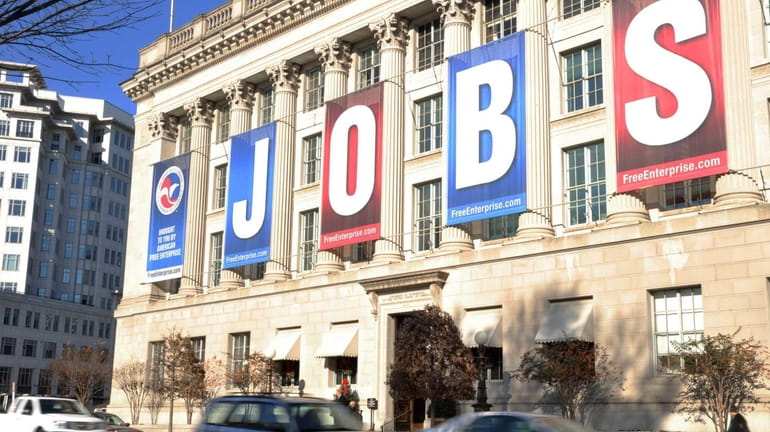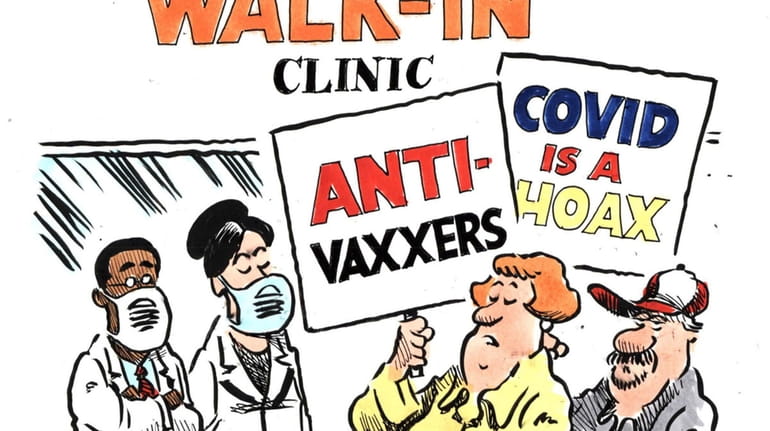Higgs: Are our unemployment statistics broken?

A jobs sign hangs above the entrance to the U.S. Chamber of Commerce building in Washington, D.C. (Dec. 13, 2011) Credit: AFP / Getty Images
The U.S. unemployment rate dipped to 6.7 percent in December, stirring considerable joy in Mudville. Before we spend time shouting hurrah, however, we should bear in mind a few other facts and recall that not so long ago an unemployment rate of 6.7 percent would have been considered scandalous.
One of the main reasons for containing our joy is that the rate fell from 7 percent in November despite the addition of just 74,000 net new jobs, a weak performance by any measure - and far below the 2013 monthly average of 182,000 new jobs. Another reason for caution is that the standard unemployment measure (U-3) provides a distorted picture of what's taking place in the job market.
A better measure of the health of the job market is total employment: how many people have jobs. After all, it is employment that contributes to our well-being. Jobs, not unemployment, produce the goods, services and earnings that our families rely on. And on this front the picture is grim by historical standards, with 2 million fewer civilians working at the end of 2013 than at the end of 2007, when the economy began to tank.
But even this doesn't tell the full story, because while the economy and job market have been struggling, the population has been growing. This means that a smaller percentage of the job-eligible civilian population - that is, non-institutionalized individuals age 16 and older - has jobs.
The employment-population ratio plummeted, of course, during the recession. While the economy has slowly inched its way back since hitting bottom in mid 2009, the ratio of employment to population has been stuck in the 58 percent to 59 percent range ever since - anemic by historical standards. In December, the employment-population ratio remained stuck at 58.6 percent.
What these numbers tell us is that the labor market remains in a funk.
The latest Bureau of Labor Statistics jobs report clearly shows that employment continues its recovery. Over the course of 2013, the number of unemployed fell by 1.9 million. And since the low point during the recession, more than 7 million jobs have been added. But in terms of total jobs, we're still in the hole.
The collapse of the employment-population ratio is particularly troubling, indicating that something must have occurred since 2008 or 2009 to depress the job market.
The White House and its allies don't want to talk about this issue. They continue to focus on the slow-but-steady monthly job gains and equally slow-but-steady decline in the unemployment rate. Administration critics respond by pointing out that the unemployment statistics are improving because the labor force has been shrinking, with many people abandoning their job searches, retiring sooner than they would have under normal circumstances, or finding ways to qualify for disability, using it as a de facto long-term unemployment insurance program.
In December, for example, 2.4 million people were classified as "marginally attached" to the labor force. These individuals wanted and were available for work, had looked for work sometime in the past year, but hadn't searched for a job in the four weeks prior to the BLS survey. As a result, they were not counted as unemployed, though unemployed they certainly are.
While there are many reasons for the sub-par performance, the many (and ongoing) uncertainties related to the future costs of ObamaCare, the Dodd-Frank financial reform act, and other pending regulations and taxes loom large among them. It seems clear from the evidence that these policies have discouraged hiring.
For many decades the U.S. population and the U.S. labor force grew in tandem. That is no longer the case.
Whatever the reason, one thing is clear: unless the labor force resumes something like its historically normal growth, we cannot expect the economy to resume its historically normal growth.
Robert Higgs is senior fellow in political economy with The Independent Institute and the author of numerous books, including, most recently, "Delusions of Power."

